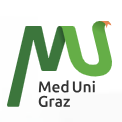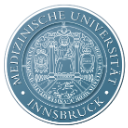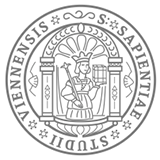Detailed introduction of University of Natural Resources and Applied Life Sciences, Vienna:
Introduction
Founded in 1872, University of Natural Resources and Applied Life Sciences, Vienna (BOKU) is an international public research university located in Vienna. It focuses on teaching and research in the field of renewable resources and has profound academic accumulation and rich teaching and research experience in multiple disciplines such as agriculture, forestry, environmental science, and food science.
Overview
Number of students and faculty: In the winter semester of 2020/2021, the school has approximately 10,941 students from more than 100 countries and approximately 2,957 faculty, including approximately 2,169 academic staff and approximately 788 administrative staff.
Discipline settings: 8 undergraduate majors, 28 Master's programs and doctoral programs cover multidisciplinary fields such as natural sciences, engineering, biotechnology, social sciences and economics, including agriculture, forestry, land and water resources management and engineering, food science and biotechnology, environmental landscaping design, architecture and planning.
History
Founded: Officially established in 1872.
Development history: The school was originally located in Palais Schönborn. In 1896, the city of Vienna decided to build a new campus in Türkenschanzpark in the 18th district. During its development, the school has continuously expanded its disciplines, strengthened scientific research cooperation and international exchanges, and gradually become an important education and research institution in Austria and even Europe in the field of natural resources and life sciences.
School Strength
Teaching resources: The school has advanced teaching facilities and laboratories, such as laboratories in biotechnology, agricultural science and other majors, which provide students with good practice and research conditions. In addition, the school has established cooperative relations with many scientific research institutions and enterprises at home and abroad to provide students with opportunities for internships, practice and scientific research cooperation.
Academic research: The research results in the field of natural resources and life sciences are fruitful, especially in the fields of sustainable development, environmental protection, food quality and safety, which are at the international leading level. The school has undertaken a large number of EU scientific research projects and international cooperation projects, and has made important contributions to promoting technological innovation and development in related fields.
Nature of the institution
Public university.
Educational philosophy
Committed to integrating the concept of sustainable development into all aspects of teaching and research, cultivating students' awareness of sustainable use and protection of natural resources, and enabling students to cope with global environmental challenges.
Emphasis on interdisciplinary education, combining multidisciplinary knowledge such as natural sciences, engineering, and economics, and cultivating professionals with innovative thinking and comprehensive literacy to better solve complex problems in the real world.
Focus on practical teaching, through internships, practical projects and scientific research cooperation, so that students can deepen their understanding and application of theoretical knowledge in practice, improve their practical operation ability and problem-solving ability.
Key laboratories and disciplines
Key laboratories: There are many professional laboratories and research centers, such as biotechnology laboratories, materials science and process engineering laboratories, water and environmental research centers, and bio-economic centers. These laboratories are equipped with advanced instruments and technical personnel, providing strong support for cutting-edge scientific research.
Key disciplines: Agricultural science, forestry science, food science and technology, environmental science and engineering, biotechnology and other disciplines have high international visibility and influence, and some of them are at the forefront of the QS World University Rankings.
Faculty
The school has 15 Departments include Materials Science and Process Engineering, Biotechnology, Water, Atmosphere and Environment, Nanobiotechnology, Chemistry, Integrated Biology and Biodiversity Research, Food Science and Technology, Landscape, Space and Infrastructure Sciences, Economics and Social Sciences, Sustainable Agricultural Systems, Civil Engineering and Natural Hazards, Forest and Soil Sciences, Crop Sciences, Agricultural Biotechnology, and Applied Genetics and Cell Biology.
Ranking
2024 QS WUR Ranking by Subject: 26th.
2021 Academic Ranking of World Universities: 401-500th.
Expenses
Tuition fees: Tuition fees for undergraduate and master's programs vary depending on the major and degree type, and are generally around 700-800 euros per semester.
Living expenses: The cost of living in Vienna is relatively high, with monthly living expenses of about 1,000-1,500 euros, including expenses for accommodation, food, transportation, entertainment, etc.
Campus
Location and environment: The main campus is located in Türkenschanzpark in the 18th district of Vienna, and another city campus is located in Muthgasse in the 19th district, close to the Heiligenstadt subway station. In addition, the school has a research facility complex in Tulln in the north of Vienna, as well as some other important test sites and research locations. The campus environment is beautiful and the transportation is convenient, providing students with a good learning and living environment.
Architectural style: The campus has a variety of architectural styles, including both historic buildings such as Gregor-Mendel-Haus, as well as modern teaching buildings and scientific research facilities, reflecting the school's historical heritage and development vitality.
-

Graz University of Technology
-

Medical University of Graz
-

University of Linz
-

Medical University of Vienna
-

Innsbruck Medical University
-

University of Vienna
-

University of Leoben
-

St. Pölten University of Applied Sciences
-

Vienna University of Technology
-

University of Graz
-

Mesoamerican University
-

Istmo University
-

Mariano Galvez University of Guatemala
-

Regional University of Guatemala
-

Galileo University
-

Francisco Marroquín University
-

Rafael Landívar University
-

University of the Valley of Guatemala
-

University of San Carlos of Guatemala
-

Technological Institute of Tlaxcala Plateau
-

Golfo University
-

Technological University of South Sonora
-

Technological University of Huejotzingo
-

Tizimín Institute of Technology
-

Chilpancingo Institute of Technology

